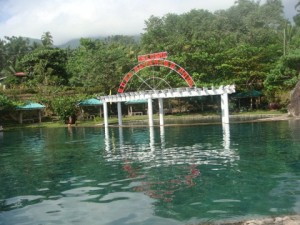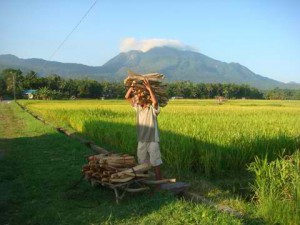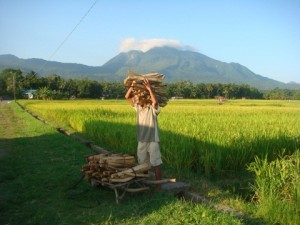By YOLANDA L. PUNZALAN
These are silky words that roll in one’s mouth once anyone begins to tell tales of the rainforest island of Camiguin, lying 10 kilometers north of central Mindanao.
A 1964 vintage, stinky, dilapidated ferry took around a hundred seasick passengers from the Balingoan port of Cagayan de Oro City. There were the young, the hip, the matronly, a white-frocked foreign priest, and weather-beaten men, most of whom were dizzy with queasy stomachs and praying hard that Jesus calms the 385- meter deep channel to bring them safely to Camiguin shores.
That was the horrifying rite of passage for these disheveled but relieved tourists, some encamped at the YMCA hostel, right in the navel of rice fields in Mambajao, Camiguin’s capital. They had to courteously ask the farmer who was drying his palay on the street to allow their van to roll over his sundried grains.
Katibawasan Falls was refreshing. Huge boulders and mossy walls of mountains provided a backdrop from the world. With the tourists below the falls’ thunderous drops and throngs of monkeys at the head of Katibawasan, cameras clicked away.
Along the narrow, winding streets, the group chanced upon school kids doing extra Saturday time of rehearsals for a lanzones festival dance, equipped with harvest baskets and the conical “salakot”.
The children seem so mild-mannered, huddled in small groups and quietly sharing stories.
Camiguin has endured several tragically violent natural and man-made upheavals. With five active and two extinct volcanoes, hundreds of lives have been lost to eruptions and massive stone churches and entire cemeteries buried in mud.
Deforestation was unabated in the 1980s. What remained of the forests has been cleared for coconut plantations, rice and other agricultural crops.
In the 1990s, commercial logging operations with salvage permits further threatened the island’s forests. Even outsiders can feel pains seeing young men on the road with heaps of freshly-cut wood beside them as trucks of logs and processed wood passed by.
Deforestation still persists to this day, and these nonchalant operators ply their trade even in broad daylight.
The gentle guide took the group to the soda swimming pool, the only one of its kind in the country. The water in this cold pool tastes like soda.
Blogger, kathangisip.com, attests that he discovered the name soda swimming pool was derived from the bubbling, bubbly characteristic of the water.
The next stop was the Sto. Nino Cold Spring, which was much too refrigerator-cold for most swimmers’ comfort. Despite the invigorating swim, one could be compelled to switch gears and head for Ardent Hibok Hibok Hot Spring.
 Ardent Hot Spring seems to be the best of Camiguin’s attractions. Once sore low-batt individuals dipped themselves into one of its natural pools with gently carved stones on its floor, first-timers could only cry in concert, “Ang sarap! (Great!)”
Ardent Hot Spring seems to be the best of Camiguin’s attractions. Once sore low-batt individuals dipped themselves into one of its natural pools with gently carved stones on its floor, first-timers could only cry in concert, “Ang sarap! (Great!)”
If a traveler has several days to stay on this island, he should definitely devote one whole day to this site and never leave the pool at all.
Entrance fee is only P30. There are at least six pools of varying depths and temperatures. The hottest is at 39 degrees and it is also the smallest.
Definitely, it’s pure relaxation with the hot spring caressing one’s weary muscles while shaded by a canopy of tall, yellow-leaved trees.
How could these local islanders not be envied at how nature’s bounty has blessed them so. Just some steps away, and they can de-stress, unlike people from afar who had to cross angry seas and go through the office bureaucracy to file a leave.
Since typhoon Quiel was rampaging Luzon at that time, its fury was also somewhat felt on the island, disabling the weekenders from visiting what is considered its stellar attraction—the white beach.
It is located on a small white island, just the size of a basketball court, with no vegetation. People keep returning there. Foreigners have fallen in love with it because of the vantage view of the entire island it offers.
Camiguin’s lanzones at this time of the year still seems to be too expensive and a bit sour.
However, meals of green, fresh ferns and sweet sour fish are deliciously cheap and nourishing. The rice variety served was very tasty.
In between spring dips, one could snack on the local cassava flour kiping, as big as a dinner plate, but very flat, laced with diluted coco jam. Costing P10 only, it already assures one of a burp.
The happy travelers slept nestled in the rice fields, the grains of which were ready for harvest in two days’ time.
People frequently make a pact with Camiguin. They always promise come back again, the next time for much, much longer.


